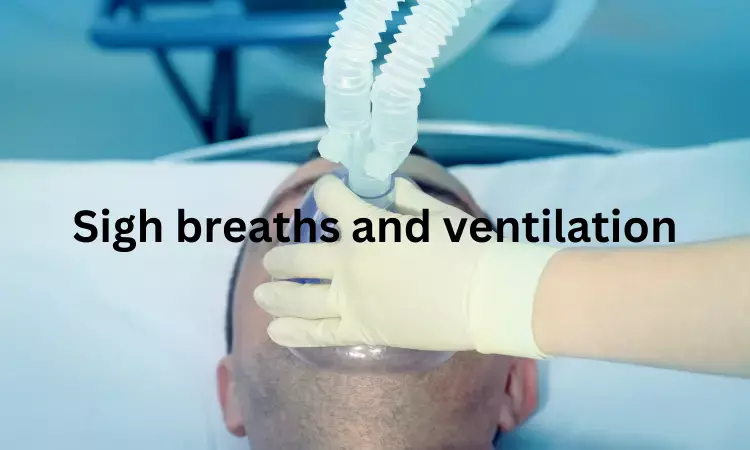- Home
- Medical news & Guidelines
- Anesthesiology
- Cardiology and CTVS
- Critical Care
- Dentistry
- Dermatology
- Diabetes and Endocrinology
- ENT
- Gastroenterology
- Medicine
- Nephrology
- Neurology
- Obstretics-Gynaecology
- Oncology
- Ophthalmology
- Orthopaedics
- Pediatrics-Neonatology
- Psychiatry
- Pulmonology
- Radiology
- Surgery
- Urology
- Laboratory Medicine
- Diet
- Nursing
- Paramedical
- Physiotherapy
- Health news
- Fact Check
- Bone Health Fact Check
- Brain Health Fact Check
- Cancer Related Fact Check
- Child Care Fact Check
- Dental and oral health fact check
- Diabetes and metabolic health fact check
- Diet and Nutrition Fact Check
- Eye and ENT Care Fact Check
- Fitness fact check
- Gut health fact check
- Heart health fact check
- Kidney health fact check
- Medical education fact check
- Men's health fact check
- Respiratory fact check
- Skin and hair care fact check
- Vaccine and Immunization fact check
- Women's health fact check
- AYUSH
- State News
- Andaman and Nicobar Islands
- Andhra Pradesh
- Arunachal Pradesh
- Assam
- Bihar
- Chandigarh
- Chattisgarh
- Dadra and Nagar Haveli
- Daman and Diu
- Delhi
- Goa
- Gujarat
- Haryana
- Himachal Pradesh
- Jammu & Kashmir
- Jharkhand
- Karnataka
- Kerala
- Ladakh
- Lakshadweep
- Madhya Pradesh
- Maharashtra
- Manipur
- Meghalaya
- Mizoram
- Nagaland
- Odisha
- Puducherry
- Punjab
- Rajasthan
- Sikkim
- Tamil Nadu
- Telangana
- Tripura
- Uttar Pradesh
- Uttrakhand
- West Bengal
- Medical Education
- Industry
Sigh breaths do not significantly increase ventilator-free days: JAMA

Mechanical ventilation is a type of therapy that helps in artificial breathing or when one can't breathe on their own. Mechanical ventilation keeps the patients airways open, delivers oxygen and removes carbon dioxide. Mechanical ventilation may lead to ventilator-induced lung injury by altering or depleting surfactant.
In a randomized clinical trial published in JAMA Network including 524 trauma patients receiving mechanical ventilation with risk factors for developing acute respiratory distress syndrome, the addition of sigh breaths did not significantly increase ventilator-free days. Prespecified secondary outcome data suggest that sighs are well-tolerated and may improve clinical outcomes.
Researchers conducted a randomized trial of sigh breaths plus usual care from 2016 to 2022 with 28-day follow-up in 15 academic trauma centers in the US. Inclusion criteria were age older than 18 years, mechanical ventilation because of trauma for less than 24 hours, 1 or more of 5 risk factors for developing acute respiratory distress syndrome, expected duration of ventilation longer than 24 hours, and predicted survival longer than 48 hours. Sigh volumes producing plateau pressures of 35 cm H2O (or 40 cm H2O for inpatients with body mass indexes >35) delivered once every 6 minutes. Usual care was defined as the patient’s physician(s) treating the patient as they wished. The primary outcome was ventilator-free days. Prespecified secondary outcomes included all-cause 28-day mortality.
The key findings of the study are
• A total of 5753 patients screened, 524 were enrolled (mean [SD] age, 43.9 [19.2] years; 394 [75.2%] were male).
• The median ventilator-free days was 18.4 (IQR, 7.0-25.2) in patients randomized to sighs and 16.1 (IQR, 1.1-24.4) in those receiving usual care alone (P = .08).
• The unadjusted mean difference in ventilator-free days between groups was 1.9 days (95% CI, 0.1 to 3.6) and the prespecified adjusted mean difference was 1.4 days (95% CI, −0.2 to 3.0).
• For the prespecified secondary outcome, patients randomized to sighs had 28-day mortality of 11.6% (30/259) vs 17.6% (46/261) in those receiving usual care (P = .05).
• No differences were observed in nonfatal adverse events comparing patients with sighs (80/259 [30.9%]) vs those without (80/261 [30.7%]).
Researchers concluded that “ In a pragmatic, randomized trial among trauma patients receiving mechanical ventilation with risk factors for developing acute respiratory distress syndrome, the addition of sigh breaths did not significantly increase ventilator-free days. Prespecified secondary outcome data suggest that sighs are well-tolerated and may improve clinical outcomes.”
Reference: Albert RK, Jurkovich GJ, Connett J, et al. Sigh Ventilation in Patients With Trauma: The SiVent Randomized Clinical Trial. JAMA. Published online October 25, 2023. doi:10.1001/jama.2023.21739.
MSc. Neuroscience
Niveditha Subramani a MSc. Neuroscience (Faculty of Medicine) graduate from University of Madras, Chennai. Ambitious in Neuro research having worked in motor diseases and neuron apoptosis is interested in more of new upcoming research and their advancement in field of medicine. She has an engrossed skill towards writing and her roles at Medical dialogue include Sr. Content writer. Her news covers new discoveries and updates in field of medicine. She can be reached at editorial@medicaldialogues.in
Dr Kamal Kant Kohli-MBBS, DTCD- a chest specialist with more than 30 years of practice and a flair for writing clinical articles, Dr Kamal Kant Kohli joined Medical Dialogues as a Chief Editor of Medical News. Besides writing articles, as an editor, he proofreads and verifies all the medical content published on Medical Dialogues including those coming from journals, studies,medical conferences,guidelines etc. Email: drkohli@medicaldialogues.in. Contact no. 011-43720751


